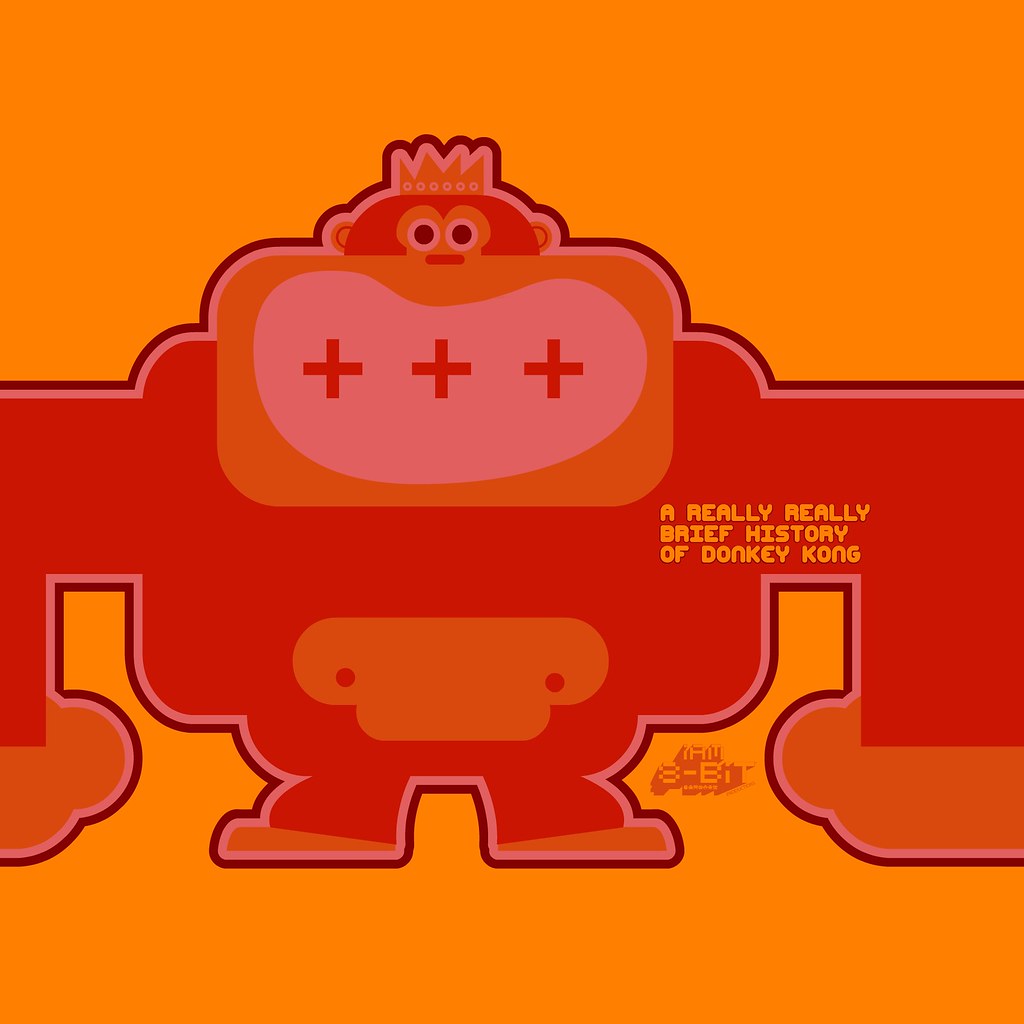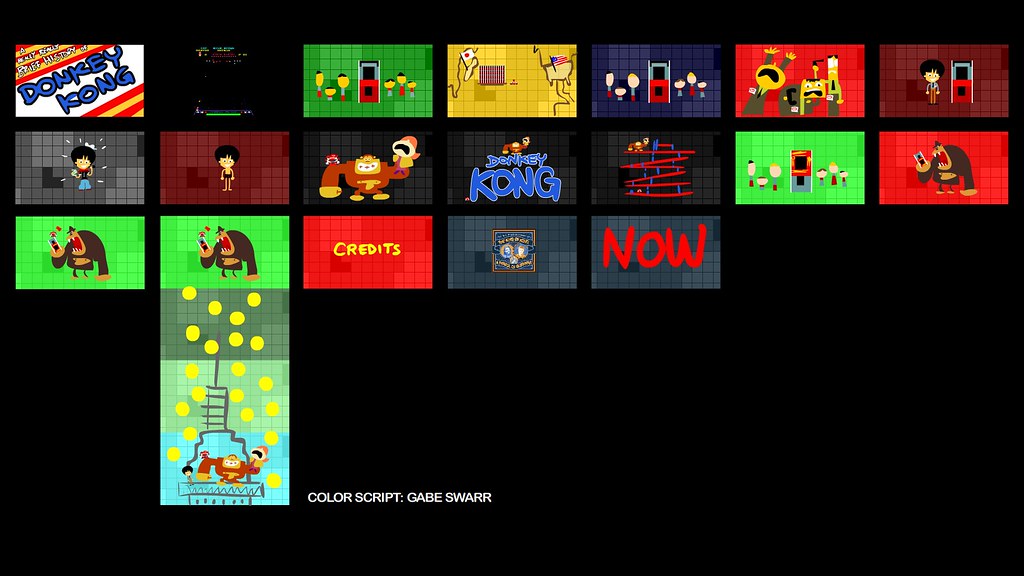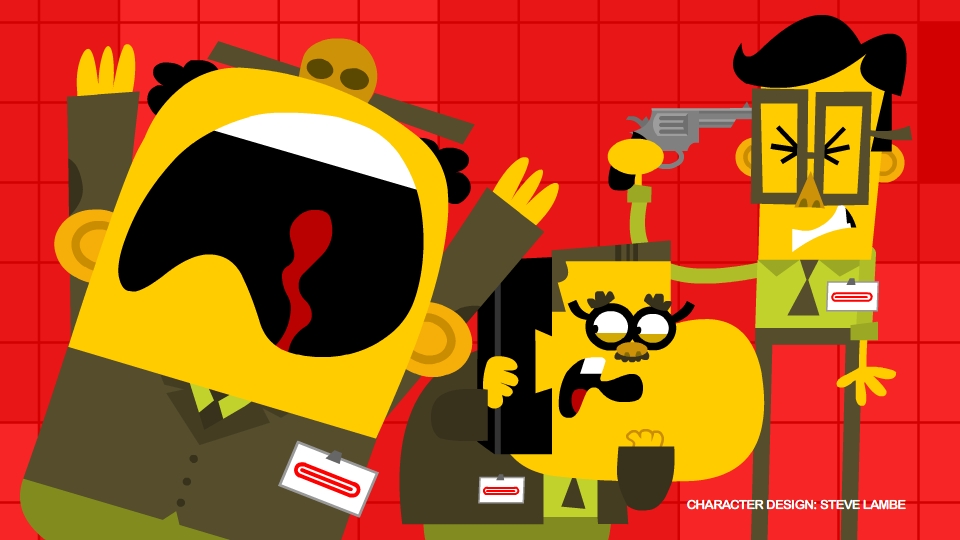This is a short film I directed for the King Of Kong DVD.
I don't know if you're familiar with this movie, but it is great. It's an epic battle of good and evil. It's about Steve Wiebe vs. Billy Mitchell for the highest score on Donkey Kong. The movie is really more about the players.
After watching this movie, I think that Weibe deserves the title, BUT I also think the Billy Mitchell is an AMAZING gamer! One of the top of our lifetime. He's portrayed as the villian, but he is still deserves the recognition for his gaming feats. Just to put it into perspective, there probably wouldn't even be competative arcade gaming if it wasn't for Billy Mitchell.
Jon felt that the movie needed some kind of historical perspective of the actual Donkey Kong game, so the short was born.
I sure didn't do this short alone! We were under the gun for this one. We turned it around in 2 weeks--and that's all after hours work! It was a huge labor of love for everyone that worked on it at I Am 8bit Studios:
Written and Produced by Jon M. Gibson
Told by Eric Bauza
Music by 8 Bit Weapon
Designed by Steve Lambe and I
Animated by Tony Mora and I
After Effects by Matt Gadbois
Here's my animatic, just be warned, the whole thing is rough and on yellow post-its.
Every short starts with what is called a color script. This is a way to keep and overview of the whole film's color. It's a way to plan out the intensity and relationships of all the colors in all the scenes in order. Color is SUPER imporant. It basically dictates the emotions in the film--all following the story that is. "Shiggy" Shigeru Miyamoto. I hope I've done him proud!
"Shiggy" Shigeru Miyamoto. I hope I've done him proud!
I loved designing DK. I must say that I despise the new DK design--ruined by RARE.
Here's some of Steve's Nintendo businessmen: Thanks again everyone for such a fine job, and especially New Line for paying for it!
Thanks again everyone for such a fine job, and especially New Line for paying for it!
Viewing: Blog Posts Tagged with: King of Kong, Most Recent at Top [Help]
Results 1 - 2 of 2
Blog: Gabe Swarr (Login to Add to MyJacketFlap)
JacketFlap tags: King of Kong, donkey kong, mario, nintendo, mario, donkey kong, King of Kong, Add a tag
Blog: The National Writing for Children Center (Login to Add to MyJacketFlap)
JacketFlap tags: Renee Kirchner, Tip For Teachers, teaching tips, Independence day, flag facts, United States Flag, Add a tag
Happy Independence Day, USA!
Here are some facts about the United States flag and a fun craft for Independence Day

from Renee Kirchner, Teaching Tips Contributing Editor
President Harry S. Truman designated June 14th as a National Holiday in 1949. On Flag Day, Americans fly the flag in front of schools, offices and homes. Students learn about the history of the flag and how to treat the flag with respect.
 The modern day American flag has seven red stripes and six white stripes. The top left corner is blue with fifty white stars. The thirteen stripes stand for the original thirteen colonies and the stars represent the fifty states. The red stripes represent England and the white stripes represent the United States.
The modern day American flag has seven red stripes and six white stripes. The top left corner is blue with fifty white stars. The thirteen stripes stand for the original thirteen colonies and the stars represent the fifty states. The red stripes represent England and the white stripes represent the United States.
Because the flag is so familiar, we may think that it has always been the same. This is not true. No one knows for certain who designed the original flag. We believe that Congressman Francis Hopkinson, a signer of the Declaration of Independence, designed the original flag. Even though there is a legend that Betsy Ross made the first flag, historians to not believe that this is true. Before June 24, 1912, there was no standard for the American flag. Flags made before this time had unusual arrangements of stars and odd proportions. President Taft established the proportions of the flag and the arrangements of the stars in an Executive Order. The number of stars on the flag increased each time a new state was added to the United States, but the number of stripes will always stay the same.
By 1912, when Arizona and New Mexico entered the Union, the flag had forty-eight stars. The number remained the same until 1959, when Alaska became a state. A year later, on July 4, 1960, the fiftieth star was added to mark Hawaii’s entry into the Union. The flag today looks exactly like the one we had in 1960.
America’s national anthem, “The Star Spangled Banner” was written about the American flag. Francis Scott Key wrote a poem in 1812 that was later set to music and adopted as our national anthem. The flag flying over Fort McHenry in Maryland after a bombardment during the War of 1812 inspired him.
It is our universal custom to display the flag only from sunrise to sunset. However, when patriotic effect is desired, the flag may be displayed twenty-four hours a day if it is lit up at night. The American flag should be displayed above state or city flags when flown on a flagpole. Occasionally the flag is flown at half-staff. This is a sign of respect for the memory of a public official or in the event of a national tragedy.
Our country honors the flag, which stands as a symbol of our unity as a nation, of our freedoms and of our power. Respect and honor the flag on Flag Day and on all other days during the year.
INDEPENDENCE DAY CRAFT
Handprint American Flag:
Materials
Large sheet of white paper (about the size of two poster boards)
Paint: Red, white and blue
Small sponge in shape of star
Pencils
Ruler
Instructions:
This flag can be made at home, but it will work best as a classroom activity. The completed flag should be displayed on a large wall or bulletin board.
1. Have students draw a box in the top left corner of flag for the fifty states.
2. Using the ruler, draw thirteen stripes on the flag with pencil. Mark the stripes that will be red with a small checkmark. The American flag has seven red stripes and six white stripes. The top and bottom stripes are both red.
3. Have one student paint the top corner box with blue paint.
4. Other students will take turns dipping their hand in red paint and placing red handprints on the stripes marked with the checkmarks. There is no need to paint the white stripes.
5. When the blue paint is dry, have several students make fifty stars by dipping the star sponge into white paint and pressing on the blue area.
flag facts Independence day Renee Kirchner teaching tips Tip For Teachers United States Flagflag facts Independence day Renee Kirchner teaching tips Tip For Teachers United States Flagflag facts, Independence day, Renee Kirchner, teaching tips, Tip For Teachers, United States Flag

